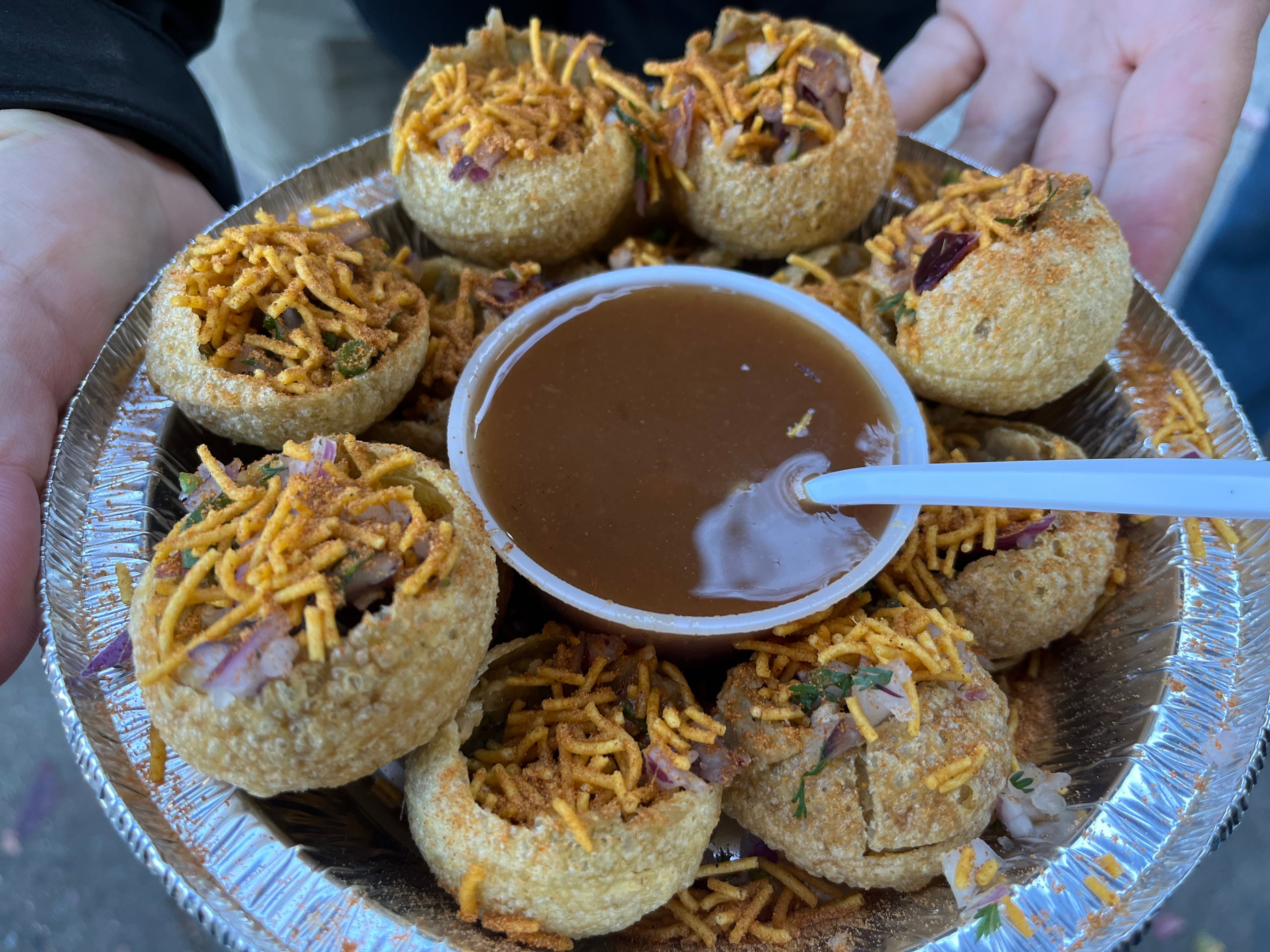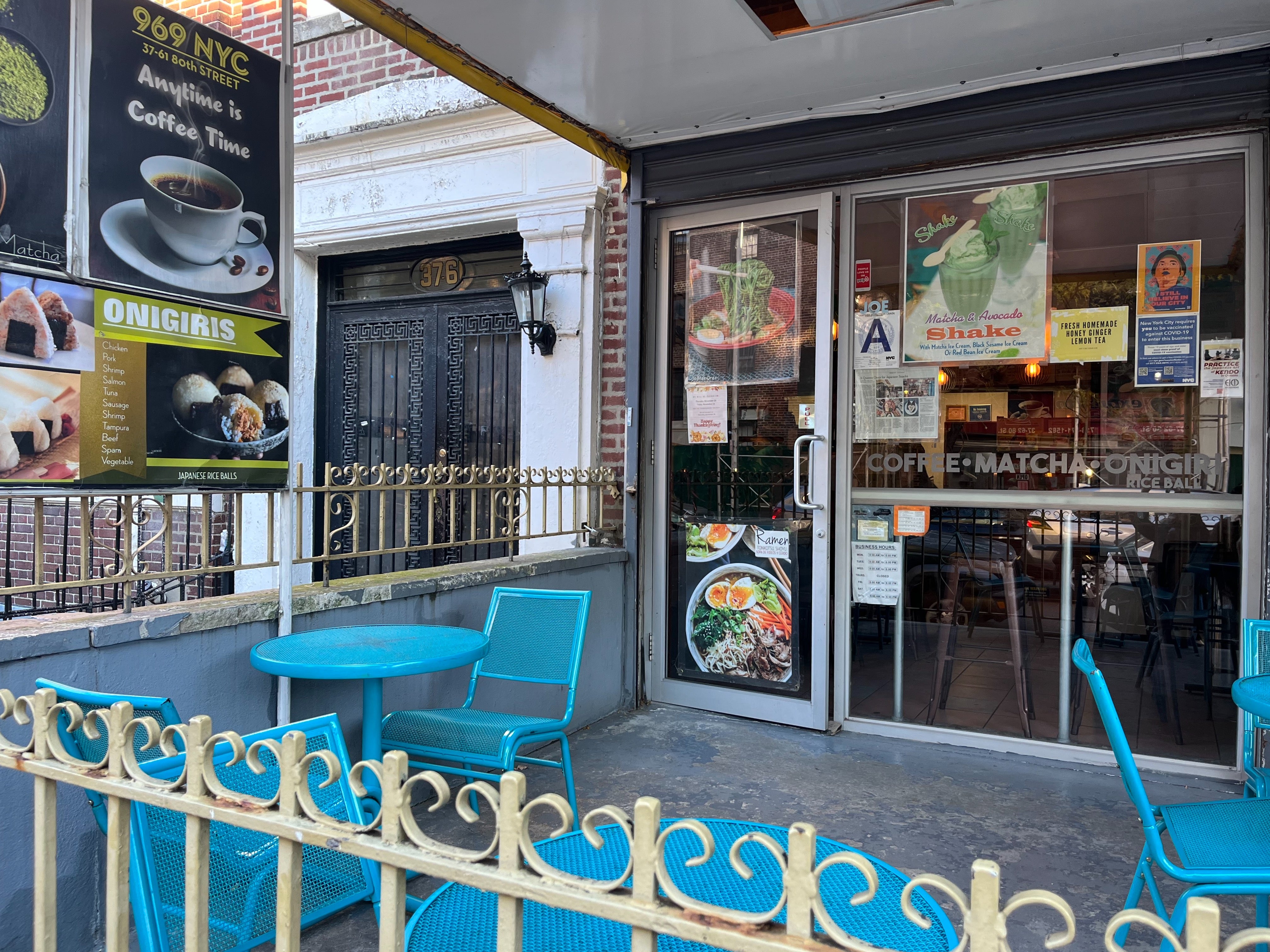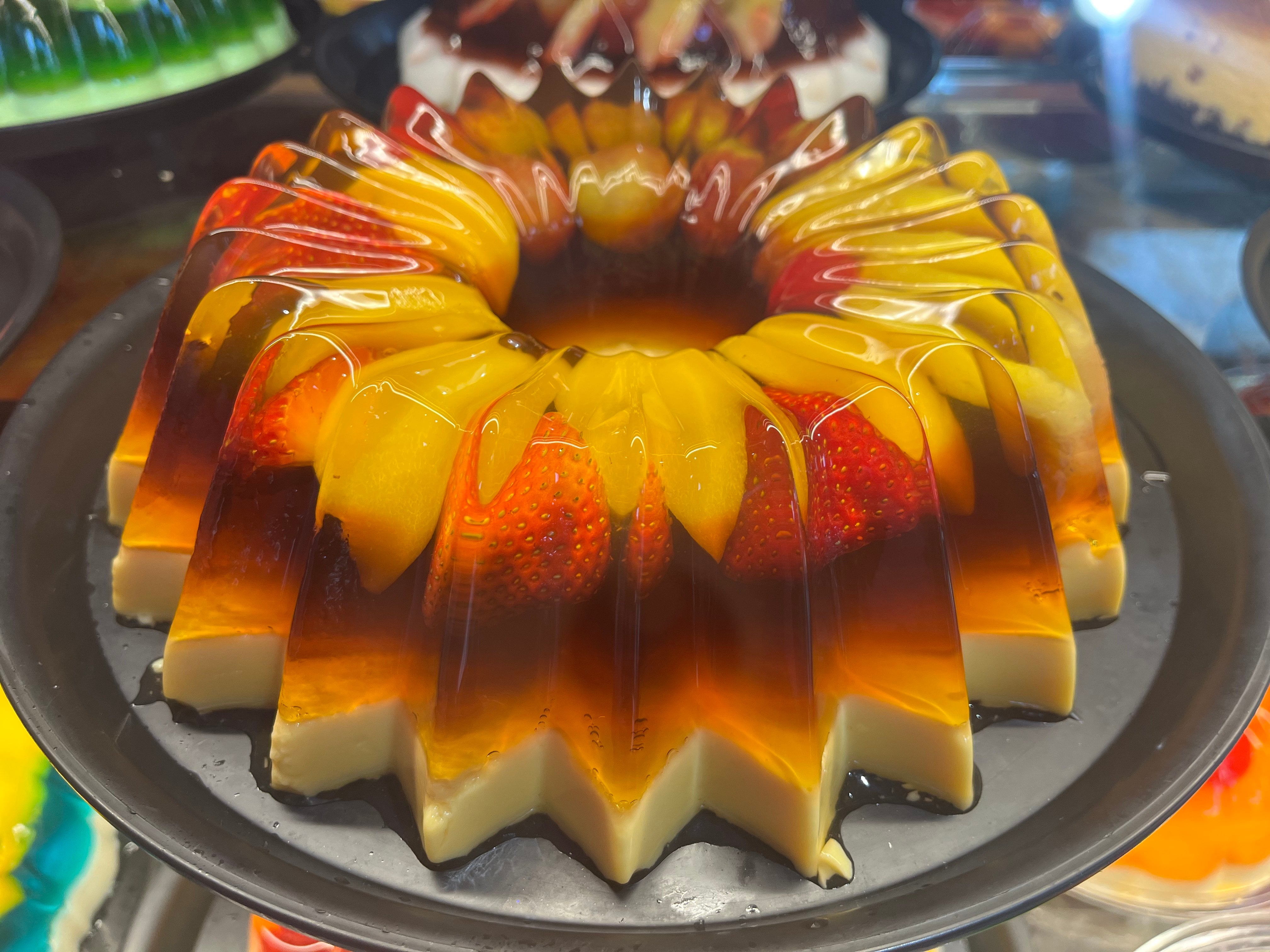The Independent's journalism is supported by our readers. When you purchase through links on our site, we may earn commission.
How to eat your way around the world on the 7 line through Queens in NYC
Japanese, Bangladeshi and Mexican cultures rub along side by side in New York’s most diverse borough. The best way to experience them? Through their street eats on a unique food tour, finds Ellie Seymour

I was feeling confident. In the past four hours, I’d packed in breakfast and lunch in central and South America – Mexico, Colombia, Ecuador and Uruguay, in that order – before a trek through the Himalayas to Nepal for a snack, on my way to Bangladesh – my current location – for another. It was thirsty work, but I had to keep going. I had one hour left to visit Japan for sushi, India for sweets and China for tea.
It was 3pm and a low-slung November sun sat in the royal blue sky, turning little Himalaya a dusky pink. Traffic noise, Bangladeshi tunes and a distant rumbling train clashed in the air. Perched on a plastic stool, I sat in silence, scoffing a Bangladeshi street food dish called fuchka: small spherical semolina shells half the size of a tennis ball, chipped open, and filled with a mash of potato, yellow peas, onion, chilli and coriander – eight for $6 (£4.72). Drizzled with sweet tamarind dressing, and each eaten whole, a bite packed a comforting sour-sweet and earthy-hot punch in the late-afternoon chill.
Here, in Jackson Heights, life played out on the street. Opposite me was the Fuska House food truck, unmissable in gaudy lime green and plastered in brightly coloured stickers advertising chaat – street snacks. Inside two chefs, one in a fedora, the other in a beanie hat, were cooking up a storm for the hungry locals waiting in line. Only five minutes ago, I’d been in Nepal around the corner eating beef momo dumplings, just $7 for seven generous morsels. And now here I was in Bangladesh.

New York City’s best aspect has always been its diversity, but nowhere is it as colourfully concentrated as underneath the route of the 7 train that rumbles on over Roosevelt Avenue in Queens. This is NYC’s most diverse borough and one of, if not the most, diverse residential zones on the planet. The train is nicknamed the “International Express” for the global feast that awaits passengers alighting at any stop between Long Island City and Flushing Main Street stops.
Read more on New York travel:
I tackled this urban culinary beast in two bites; alone at first for a couple of train stops, then on a guided tour for a deeper dive. I set out from Grand Central station deliberately with an empty stomach. Twenty minutes later, I was in the neighbourhood of Sunnyside, buying hot chocolate and moreish pandebono (soft cheese bread) at the Rico Pan Bakery – a small, sleek Colombian place, the queue out the door. One stop further on the train into Woodside, I noted the concentration of Irish pubs, like Donovan’s – apparently, they do a great burger – with its mock Tudor façade and flower-filled window boxes a clue to the area’s Irish immigrant heritage.

“They say that if you walk a mile in the borough of Queens you’re likely to run into on average 20 to 25 different languages. So, today, part of the game is to see how many countries around the world we can taste food from in five and half hours,” said Sierra Springarn, our brilliant culinary tour guide. We’d met in Corona Plaza at the start of our deep dive into two distinct neighbourhoods: Elmhurst – “for a lesson in pan-Latino cultures” – and Jackson Heights – “here we’ll be in Asia, and hopefully have time to dip our toe in Japan”.
Queens felt like how I imagined New York City would have been back in the day, before gentrification and chain coffee shops. It also felt like I’d been plunged into a festival: the sound of music, the rumble of the train, people everywhere, a mix of food scents on the air. Just then, a man in his late seventies (at a guess) pushing a trolley full of water bottles came over.
“Tony is the mayor of Corona Plaza,” Sierra joked. “He always stops by to welcome guests to the neighbourhood.” Whenever he’s feeling up to it, he hangs out at the plaza, walks the length of Roosevelt Avenue here, knows every shopkeeper and every vendor, and looks out for everyone. “He’s a good dude, so we love to say good morning to Tony as he loves to say good morning to us,” added Sierra. It’s this sense of community and tradition that forms the lifeblood of Queens; each eatery I visit is a unique micro-community.
It’s this sense of community and tradition that forms the lifeblood of the Queens; each eatery I visit is a unique micro-community
At a nearby Mexican bakery, Tulcingo, chipper Mariachi music filled the rainbow-hued space, where locals piled colourful breads and pastries to take home onto silver trays with tongs. I got stuck at a glass cabinet filled with elaborately iced cakes next to some kitschy, fruit-filled, technicolour moulded jelly confections. Mexicans, it seemed, are champions of the 1950s-style gelatine-based dessert. “In the US, these are very old-fashioned, but in Mexico, they love them as much as a sponge cake,” Sierra informed me.
Two minutes walk south from the 7 line, we found La Espiga, one of the first full-scale sit-down Mexican restaurants in Queens. In the window, a lady was making sopes – a traditional Mexican dish consisting of a fried masa base with savoury toppings. A squash blossom quesadilla later, followed by more pandebono in Colombia, a sweet, thick, oat-based drink called “quaker” in Ecuador, fresh beef empanadas and beer in Argentina, and yerba matte tea in Uruguay, it was time to visit Japan in the neighbourhood of Elmhurst.

Here, I met retired chef, Mitsumine Oda, whose story I found heartwarming. Yet to change the signage, he runs a Japanese deli hidden in the 969 NYC Coffee shop, which he opened to keep himself busy. His menu changes, and he’s happy to cook on the spot. His speciality is a triple-layer Onigirazu, a sushi sandwich, one that’s made him Instagram famous in the city. “This is a beloved third place for so many people in this community,” explained Sierra. “Teens come after school for snacks, mums for coffee in the morning. The neighbourhood takes care of him by giving him a purpose and in turn, he cares for them.” He donates all the tips from the jar on the counter to local charities.
They say that if you walk a mile in the borough of Queens you’re likely to run into on average 20 to 25 different languages
After a hot sweet chai from Merit Kabab Palace and Indian treats from city-wide-favourite Maharaja Sweets, where the queue never abates, I finally have energy for China. A couple of stops on the 7 line to Flushing Main Street and I was in New York’s second Chinatown, where I found the Golden Shopping Mall. Uninspiring from the outside, inside it’s foodie heaven, home to several vendors, like Lanzhou Handmade Noodle. Here, I watched noodles being stretched by hand in front of my eyes and dropped into a boiling broth, which I sipped slowly; Queens culinary mission accomplished.

Travel essentials
Getting there
British Airways flies to New York JFK from London Heathrow, from £512 return.
Staying there
1 Hotel Central Park is an eco-conscious luxury property in Manhattan, with good subway links, a farm-to-table restaurant and an electric house car for jaunts.
Hotel Edison is a great value luxury hotel in Times Square with spacious suites, a cocktail bar and easy access to the 7 line train to Queens.
More information
Culinary Backstreets offers several culinary food tours of Queens from £150 per person.
Read more of our best New York hotel reviews
Join our commenting forum
Join thought-provoking conversations, follow other Independent readers and see their replies
Comments